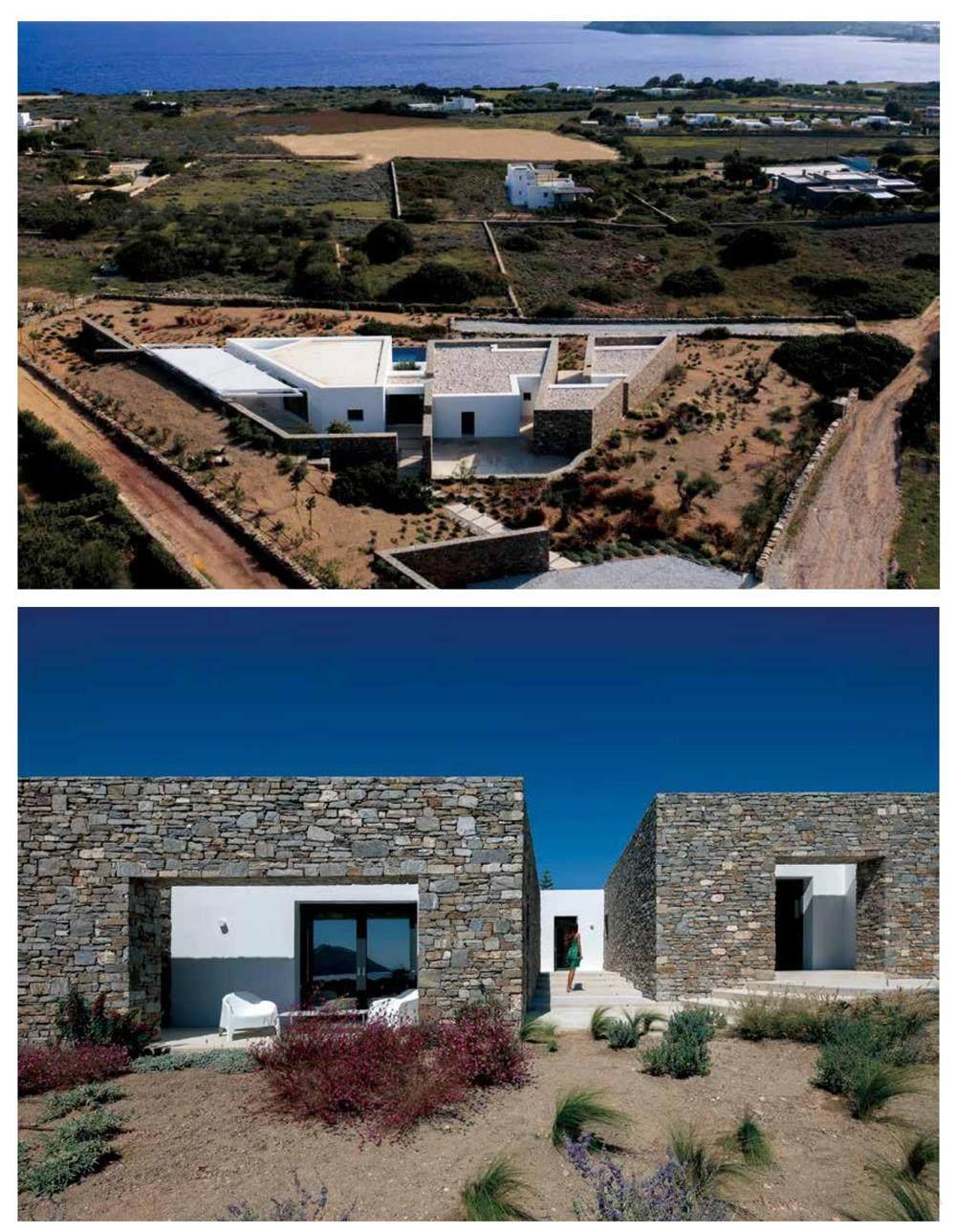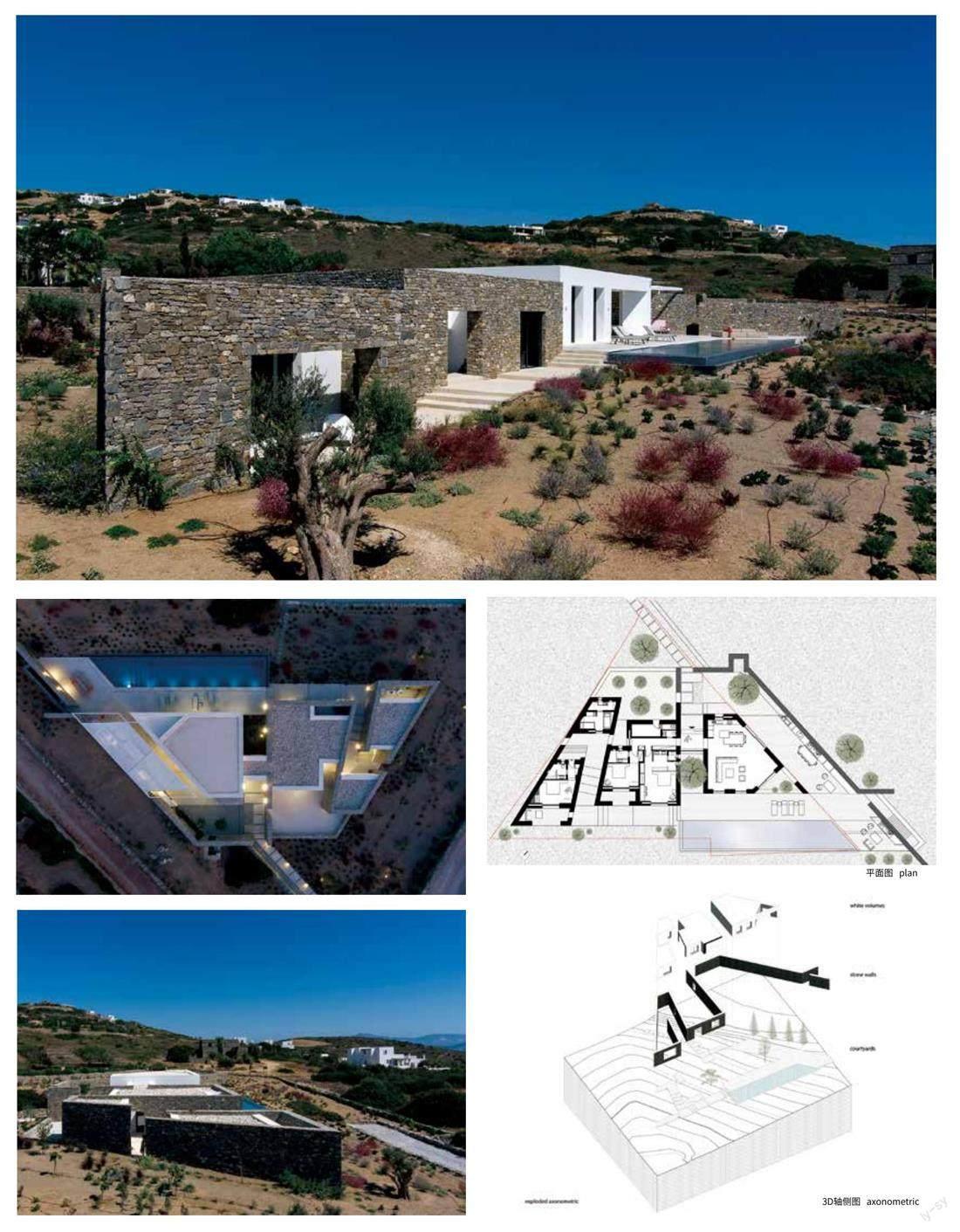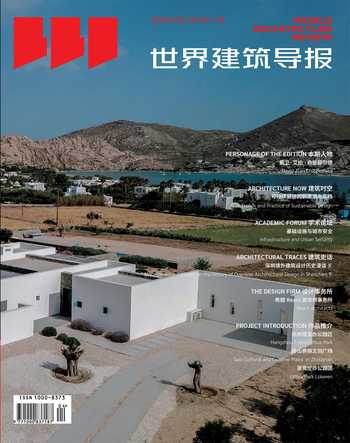“三角”别墅希腊帕罗斯


設计单位:React建筑师事务所
项目建筑师:Yiorgos Spiridonos, Natasha Deliyianni
合作建筑师:Andreas Androulakakis, Tatiana Zanavara
项目主管助理:Ioannis Vagias
机电工程:Christos Smyrnis
照明设计:Halo Lighting
地板工程:Christos Gerochristos
建筑面积:274平方米
项目年份:2019年
摄影师:Panagiotis Voumvakis
Architects: React Architects
Lead Architects: Natasha Deliyianni, Yiorgos Spiridonos
Collaborating Architects: Andreas Androulakakis, Tatiana Zanavara
Associate Supervisor Architect: Ioannis Vagias
MEP : Nicolaos Christofilakis
Lighting Design: HALO LIGHTING
Flooring: Christos Gerochristos
Area: 274 m?
Year: 2019
Photographs: Panagiotis Voumvakis
Ysterni三角位于基克拉迪群岛帕罗斯岛,附近是Ysterni的“Vigla Phryktoria”遗迹。它是迈锡尼时代构成蒂诺斯-小亚细亚通讯网络的11个通用场景之一。按照规划,该别墅坐落在Ysterni的山上。建筑呈东南走向,可以最大限度地利用太阳光,并避开基克拉迪岛凛冽的北风。
场地呈三角形走势,由于尖角以及幽闭角的原因,这种走势有时也会影响房屋的布局。不过,这里不拘一格的房屋平面克服了这一障碍,并使得三角走势成为设计的核心元素。我们还使用了传统基克拉迪建筑的元素,根据生物气候建筑的原则,设计了一个与景观完全和谐相融的住宅,其目标是使建筑在环境中的占地面积最小。
虽然面向外部景观,但房屋内部很是宁静,主要是房屋的造型是基于基克拉迪修道院。大体量的单体建筑被分解成多个更小的体量。这样一来,建筑和景观相互衬托,和谐共生,别墅的体量也就明显缩小了。充分利用连接几个体量的庭院区域就构成了一个独立的住宅综合体。
西北侧的入口处有不规则的台阶,与橄榄树一起,构成了住宅的轴线。大空间平面的轴线右侧是公共区域,左侧是私人区域,构成较小的独立体量。
为满足现代住户的需求,设计中对每一个加入到建筑中的形态元素都给予了重视。开口的设计与建筑物的建筑特点彼此融合。重复和标准化的开口元素在设计中占主导地位。另外,烧烤区的凉棚又凸显了建筑的三角形状这一特点。
总之,三角形状的布局、体量适中、石材和木材的使用以及硬表面的节约特性,都构成了这座住宅的典型特征。景观与建筑巧妙融合,植被覆盖了大部分区域,因保留着原有的植被,所以地块中大部分保留着原有的形态。
The Ysterni Triangle is in the area of Ysterni on Paros, Cyclades, nearby are the remains of the Vigla phryktoria of Ysterni. It was one of the 11 phryktorias that made up the Tinos - Asia Minor communication network during the Mycenaean era. Following the planning of the phryktories, the residence is placed on the hill of Ysterni. It has a southeast orientation for maximum use of light and protection from the strong northerly winds that characterize the Cycladic Island.
The site is triangular, which is sometimes a deterrent factor for the layout of the house due to the sharp and claustrophobic angles. On the contrary, this residence with free floor plans manages to overcome this obstacle and make it the central element of the design. Using also elements of traditional Cycladic architecture, we designed a residence that is fully in harmony with the landscape with the principles of bioclimatic architecture, the goal of which is the smallest footprint of the building in the environment.
Although it is facing the view, the house has a tranquil interior because it was modeled after Cycladic monasteries. The single building's vast volume is broken up into smaller volumes. In this way, the building and landscape are harmoniously adapted, and the volume of the house is noticeably reduced. Utilizing the courtyard area that connects the several volumes, a single residential complex is built.
The entrance on the northwest side is marked with interrupted steps which, together with the olive tree, define the central axis around which the residence is being developed. The common spaces are developed on the right side of the axis in a free plan and the private areas are developed on the left, in smaller independent volumes.
Importance has been given to every morphological element that comes to be added to the building, serving the needs of the modern resident. The design of the openings is combined with the architectural character of the building. The element of repetition and standardization of openings dominates the design. Also, the pergola in the bbq area in turn emphasizes the triangular shape of the building.
In conclusion, the triangular arrangement, the modest volumes, the use of stone and wood, and the economy of hard surfaces come to underline the archetypal form of this residence. The landscape architecture is integrated into the project by covering the largest part of the building with vegetation and leaving intact the largest part of the plot that maintains its original vegetation.

